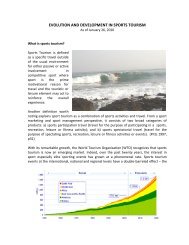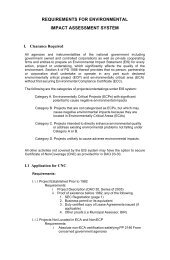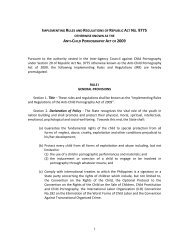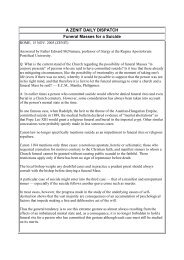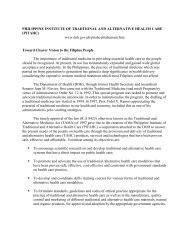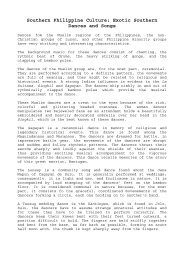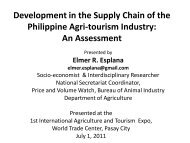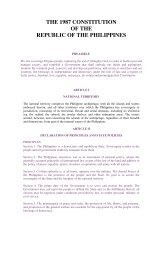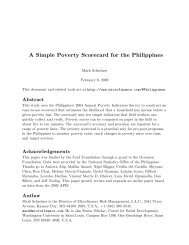Bangus or Milkfish Cultivation Systems in the Philippines
Bangus or Milkfish Cultivation Systems in the Philippines
Bangus or Milkfish Cultivation Systems in the Philippines
You also want an ePaper? Increase the reach of your titles
YUMPU automatically turns print PDFs into web optimized ePapers that Google loves.
In mar<strong>in</strong>e sea cages, juveniles of 30 to 50 grams are stocked at a rate of 20-50 per square meter<br />
depend<strong>in</strong>g on <strong>the</strong> site and <strong>the</strong> bus<strong>in</strong>ess plan of <strong>the</strong> grower. Harvest can reach up to 30-40 kilograms per<br />
cubic meter of 500-gram bangus <strong>in</strong> six to eight months.<br />
Acc<strong>or</strong>d<strong>in</strong>g to Bocaya, at least 50 percent of <strong>the</strong> costs <strong>in</strong> <strong>in</strong>tensive pond systems goes to feeds. The o<strong>the</strong>r<br />
costs that figure are electricity, water, lab<strong>or</strong> and pond ma<strong>in</strong>tenance costs. In mar<strong>in</strong>e cage systems,<br />
feeds are 80 percent of <strong>the</strong> costs. In extensive systems, lablab production is still 40 percent of <strong>the</strong> costs.<br />
“On <strong>the</strong> average, gross profits are at about 25 to 30 percent of sell<strong>in</strong>g price on a good year across all<br />
production systems,” Bocaya po<strong>in</strong>ts out.<br />
No wonder, sales of hatchery-bred f<strong>in</strong>gerl<strong>in</strong>gs are <strong>in</strong>creas<strong>in</strong>g. When <strong>the</strong>y were new, <strong>the</strong> fish operat<strong>or</strong>s<br />
and growers were skeptical about us<strong>in</strong>g <strong>the</strong> hatchery-bred f<strong>in</strong>gerl<strong>in</strong>gs. They thought that those caught<br />
from <strong>the</strong> wild were m<strong>or</strong>e hardy.<br />
However, <strong>the</strong> perceptions of bangus farmers have changed, Bocaya said. They now prefer <strong>the</strong> hatcherybred<br />
f<strong>in</strong>gerl<strong>in</strong>gs because <strong>the</strong>y are m<strong>or</strong>e unif<strong>or</strong>m and <strong>the</strong>y also grow faster. Those from <strong>the</strong> wild usually<br />
have a survival rate of 50 to 60 percent while those from <strong>the</strong> hatchery usually have 82 to 85 percent<br />
survival rate.<br />
FHI now sells hatchery-bred f<strong>in</strong>gerl<strong>in</strong>gs all over <strong>the</strong> country. It delivers only when <strong>the</strong> m<strong>in</strong>imum volume<br />
of <strong>or</strong>der is 500,000 pieces. “Generally, <strong>the</strong> buyers pick-up <strong>the</strong> fry from our sales offices,” Bocaya<br />
says. Buyers can buy f<strong>in</strong>gerl<strong>in</strong>gs from <strong>the</strong>ir ma<strong>in</strong> sales office at 2286 Alsons Build<strong>in</strong>g, Pasong Tamo<br />
Extension <strong>in</strong> Makati City. They have offices also <strong>in</strong> Bacolod City, Iloilo City, and Alabel, Sarangani<br />
Prov<strong>in</strong>ce.<br />
Ref.: http://www.gaiadiscovery.com/mar<strong>in</strong>e-life-latest/bangus-<strong>or</strong>-milkfish-cultivation-systems-<strong>in</strong>-<strong>the</strong>-philipp<strong>in</strong>es.html




